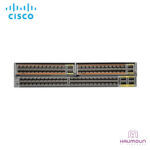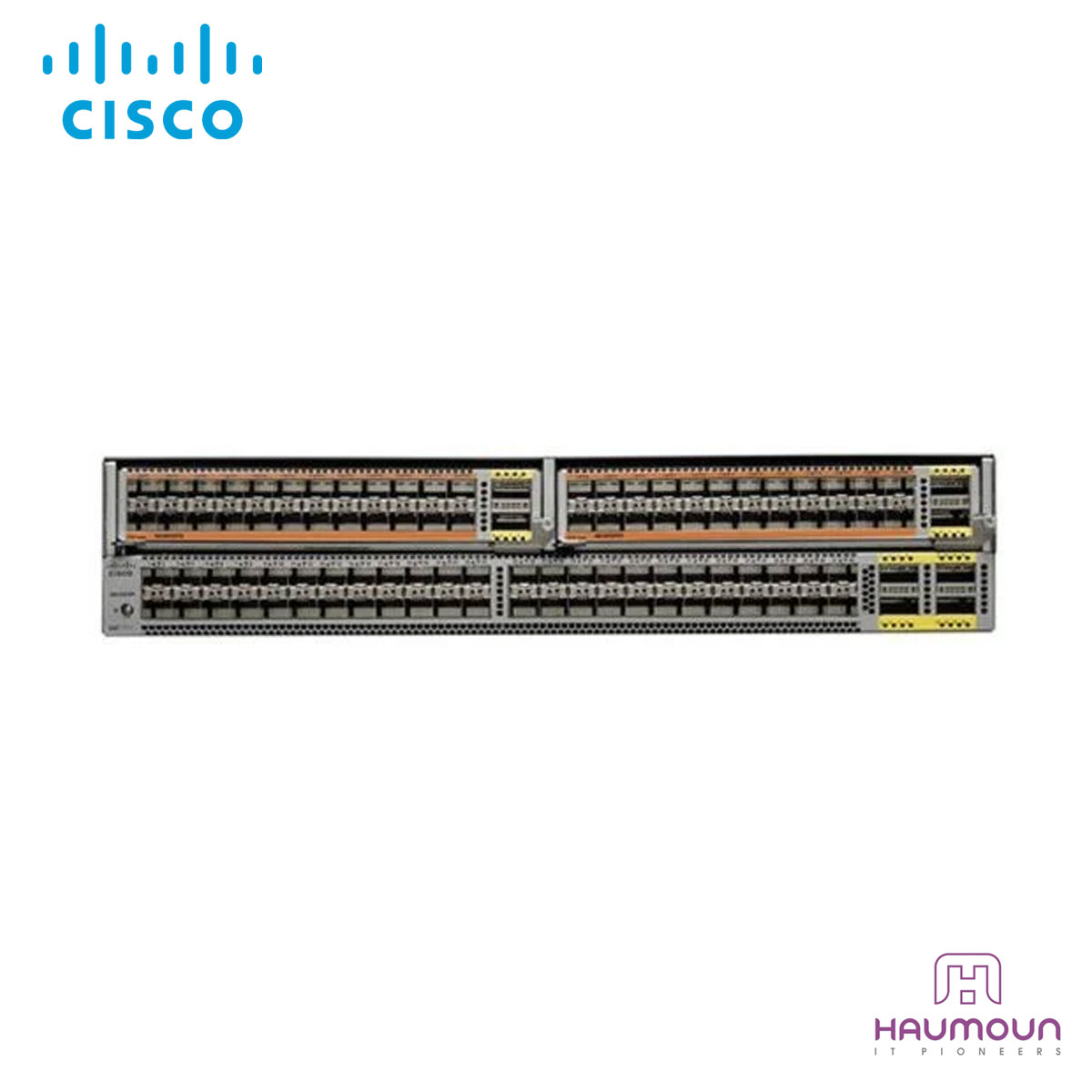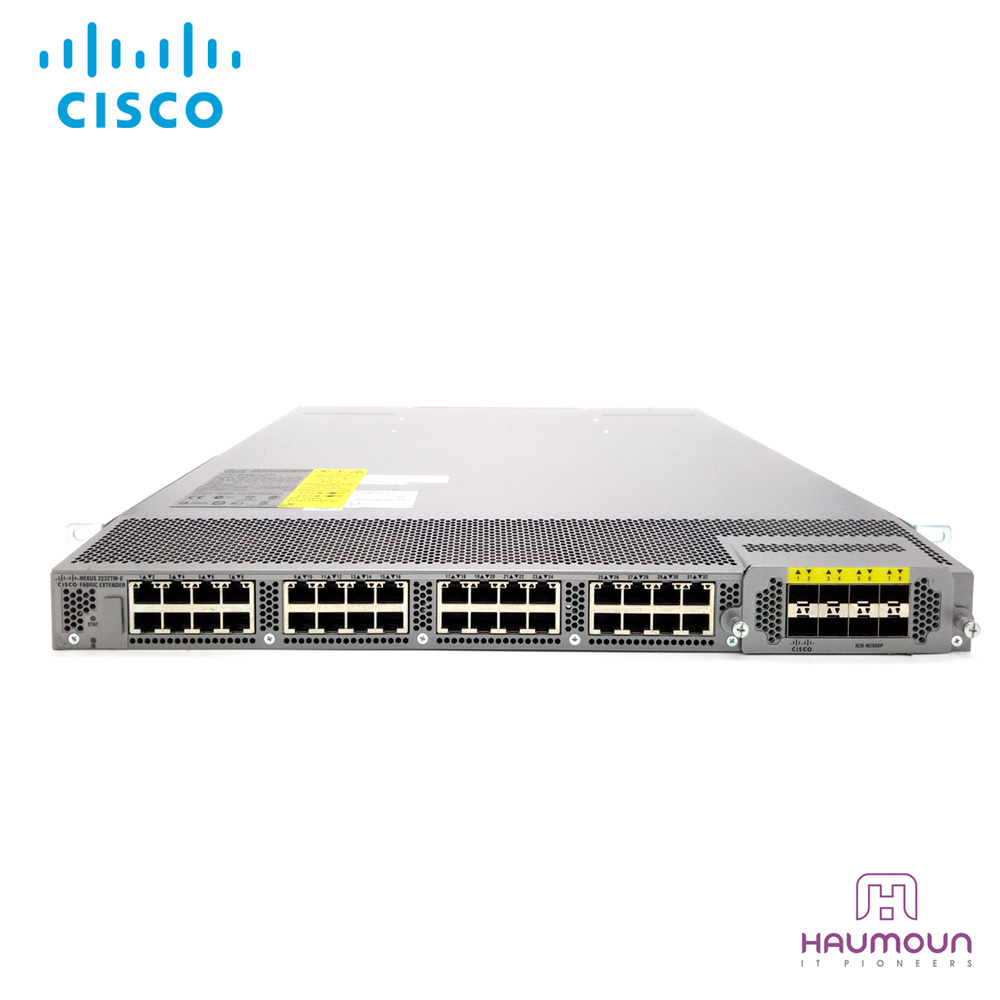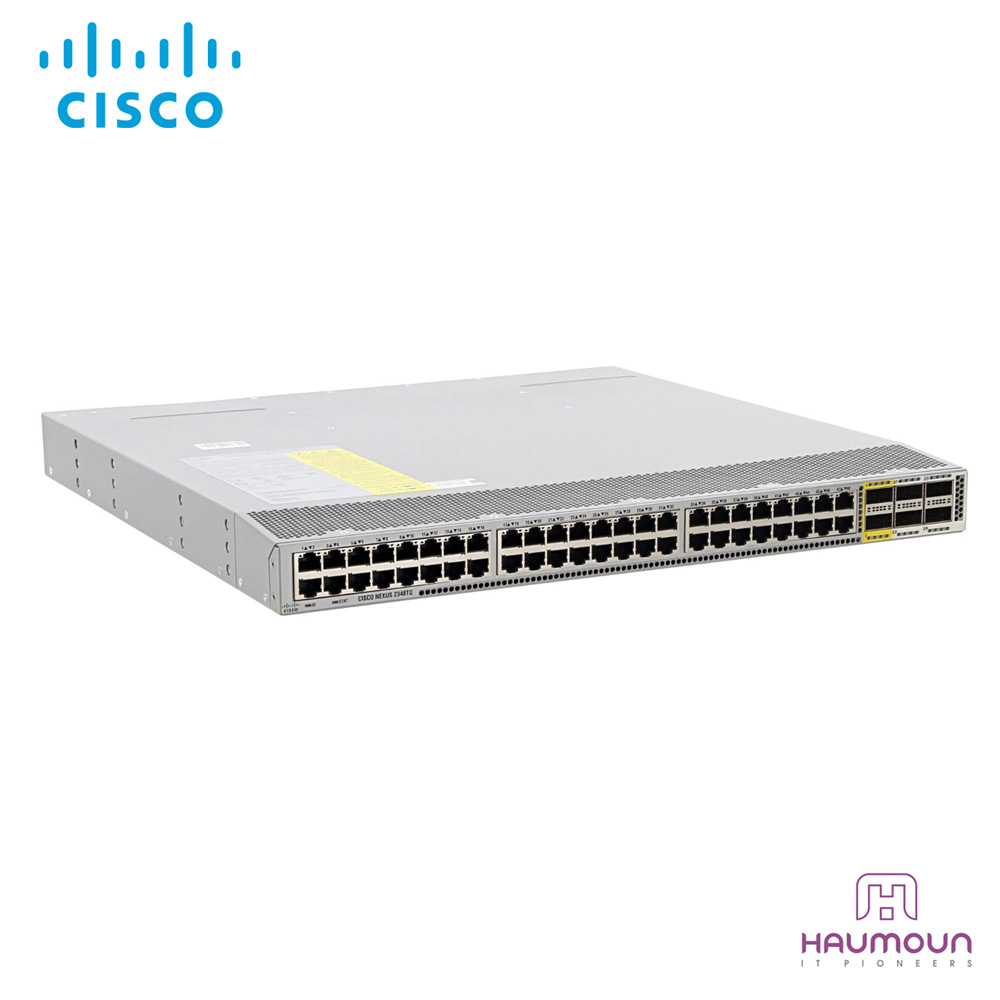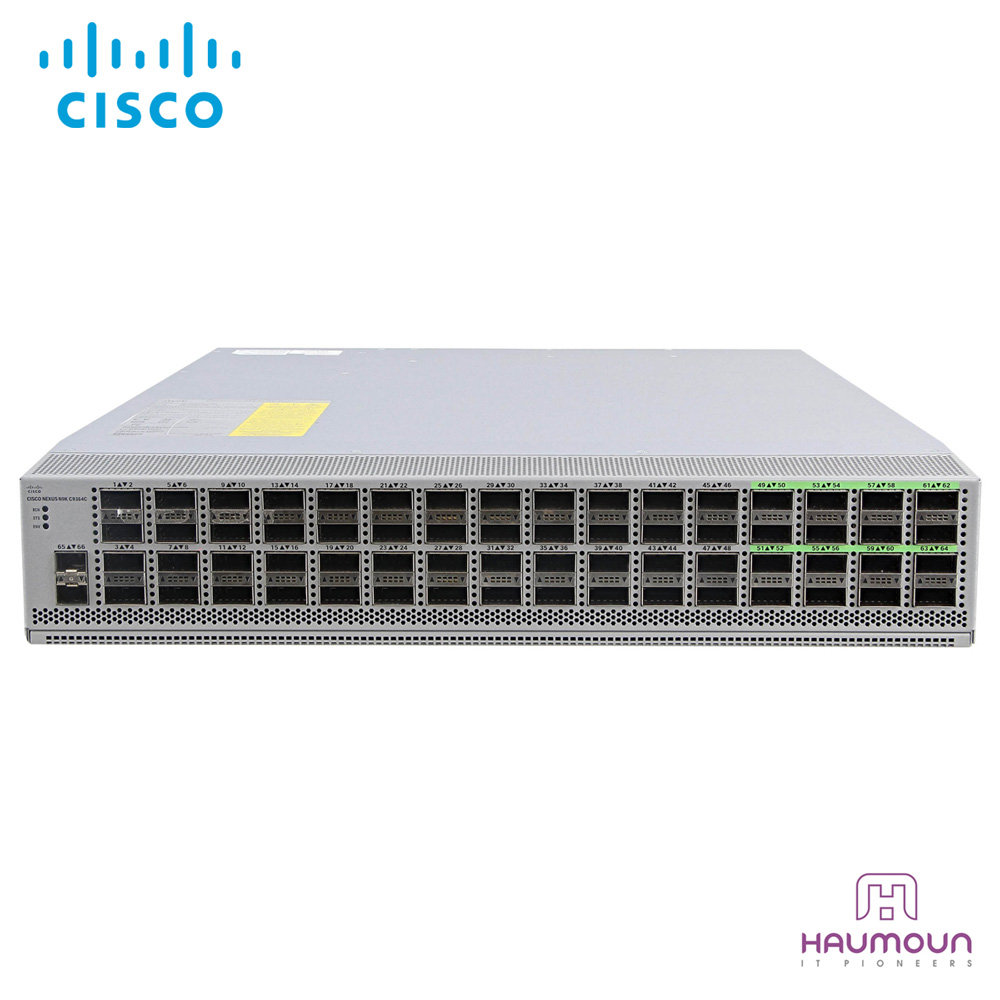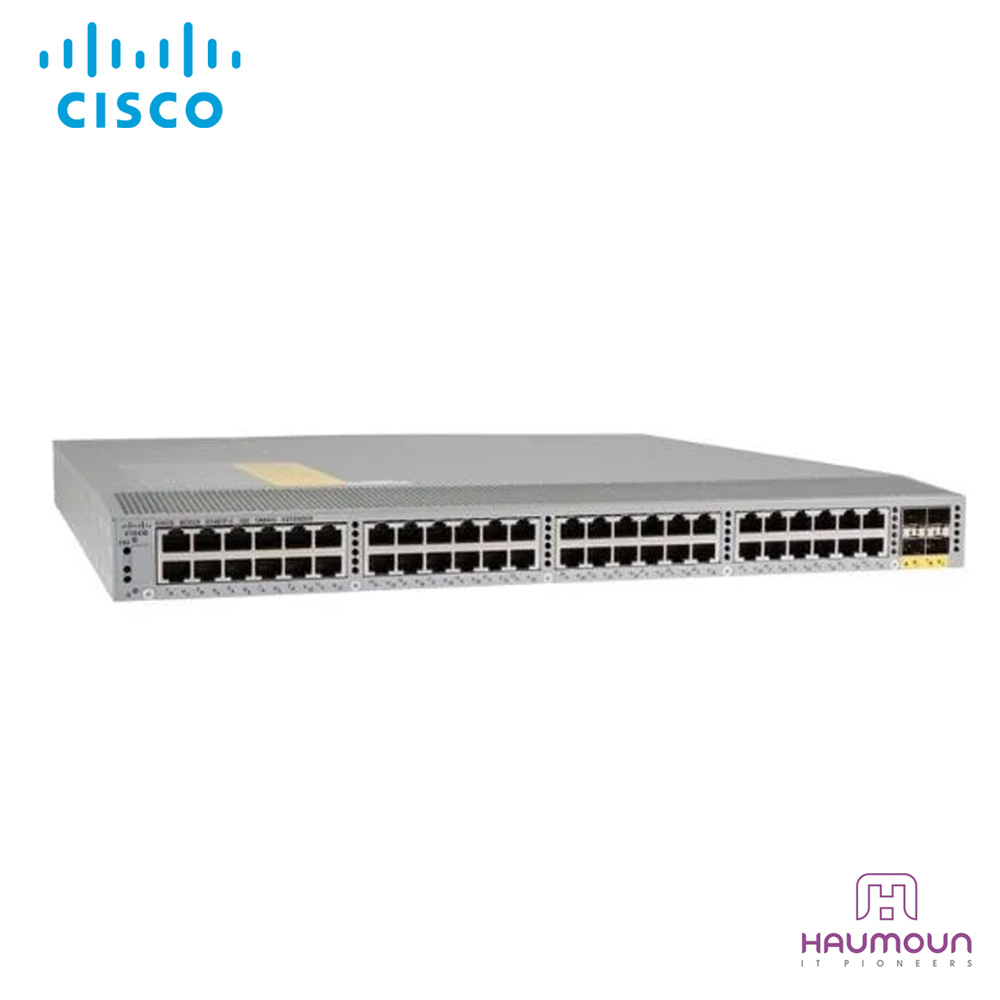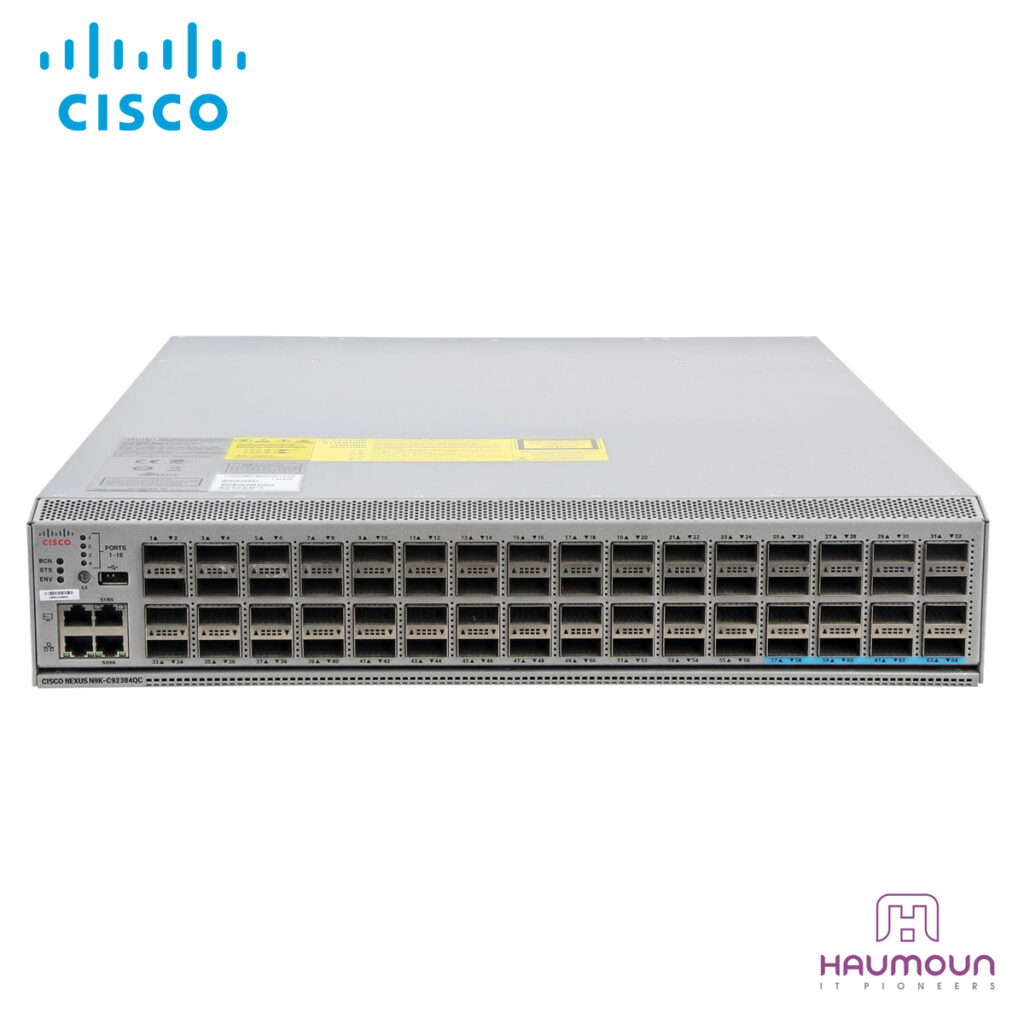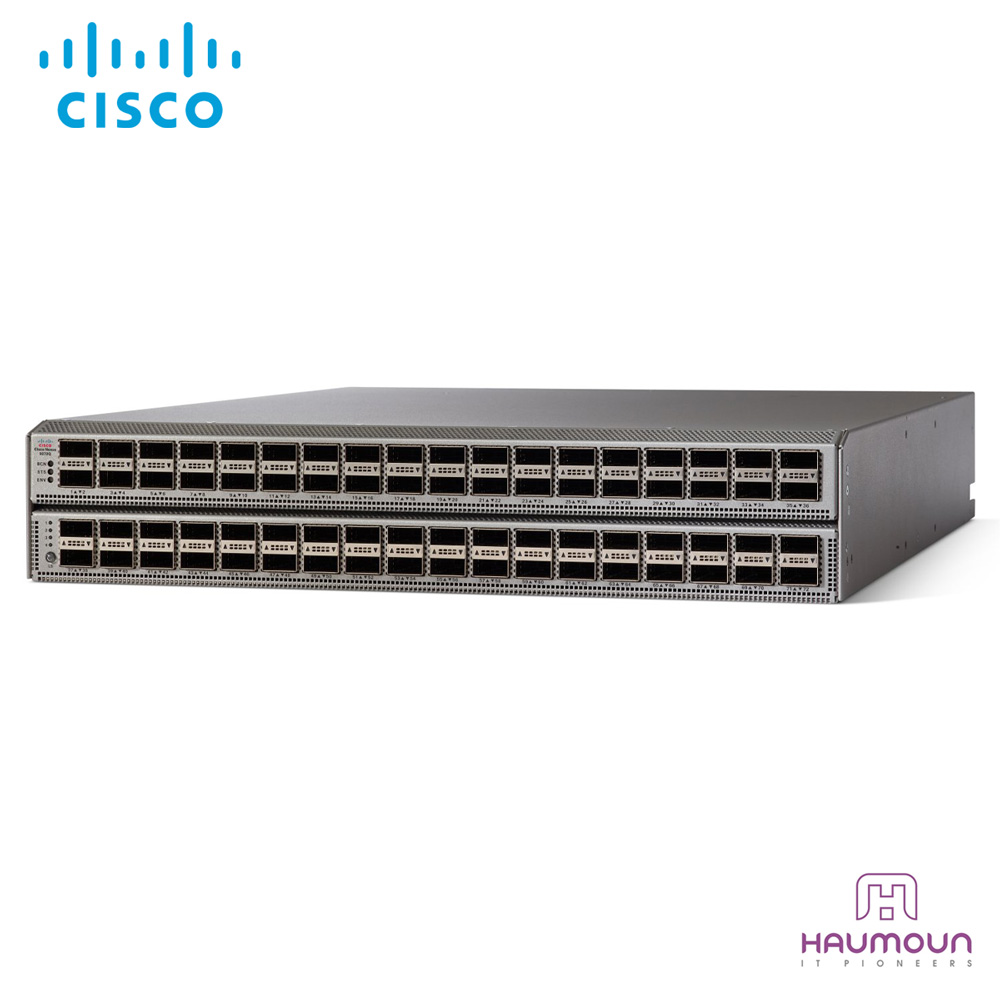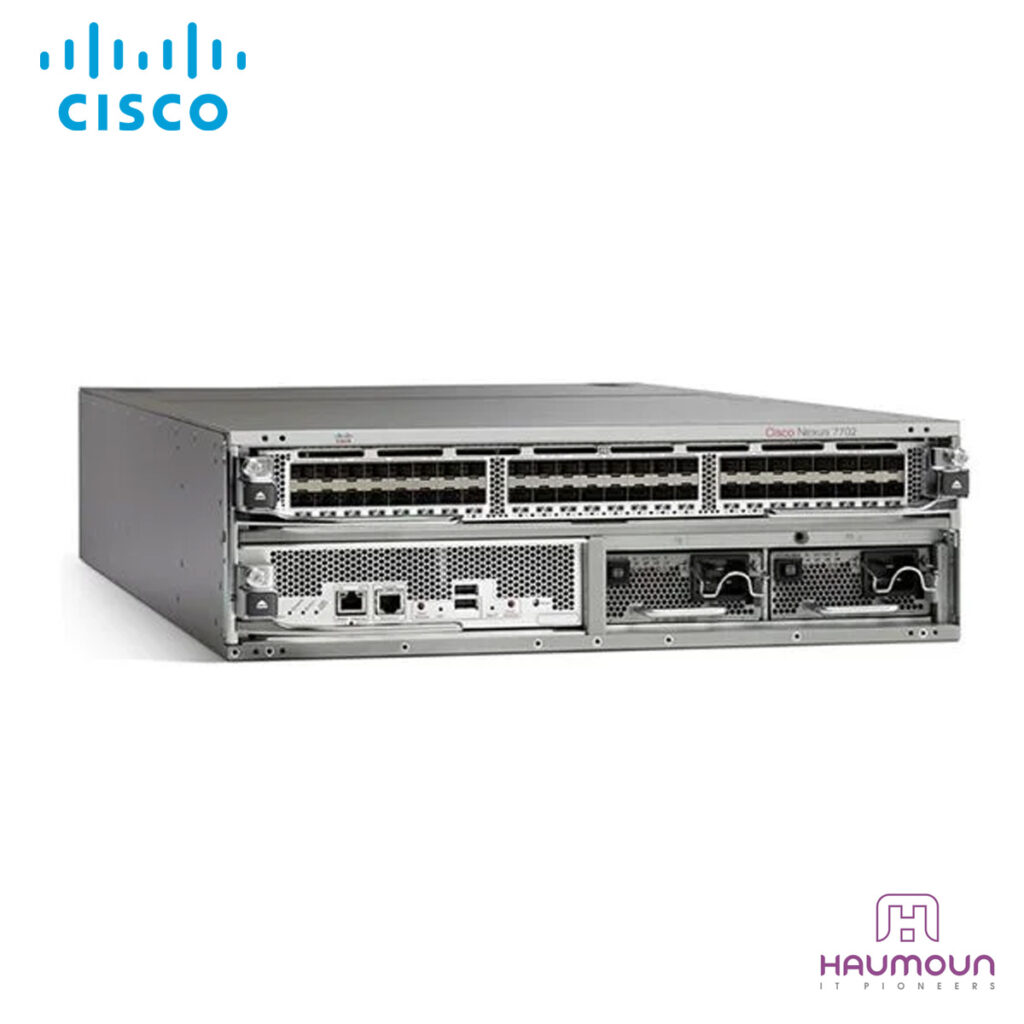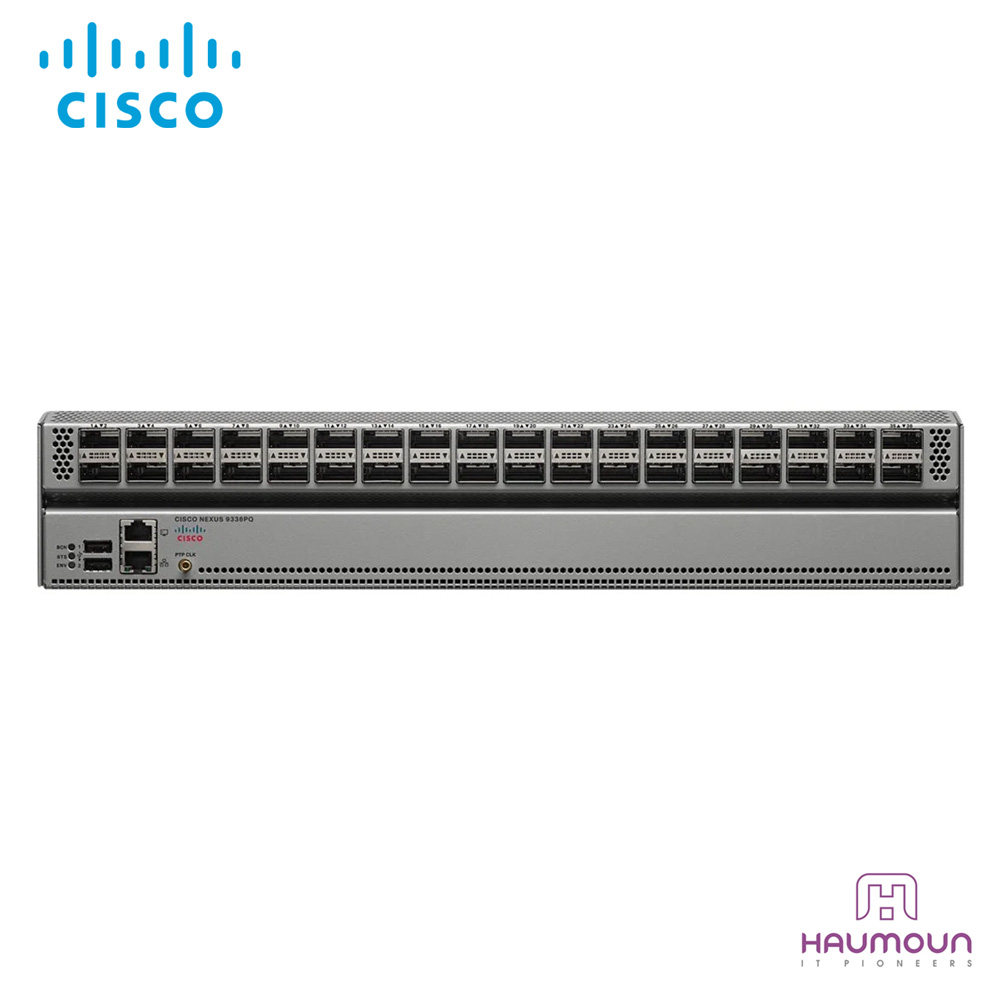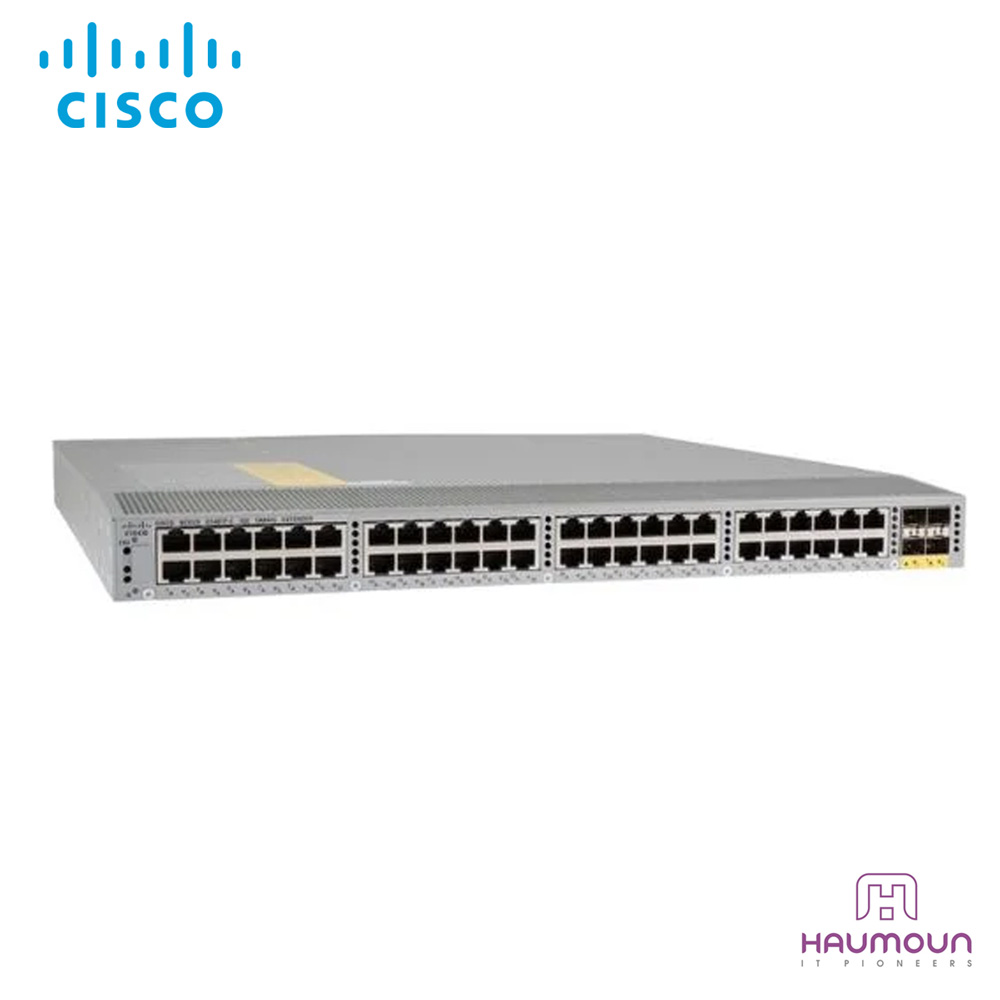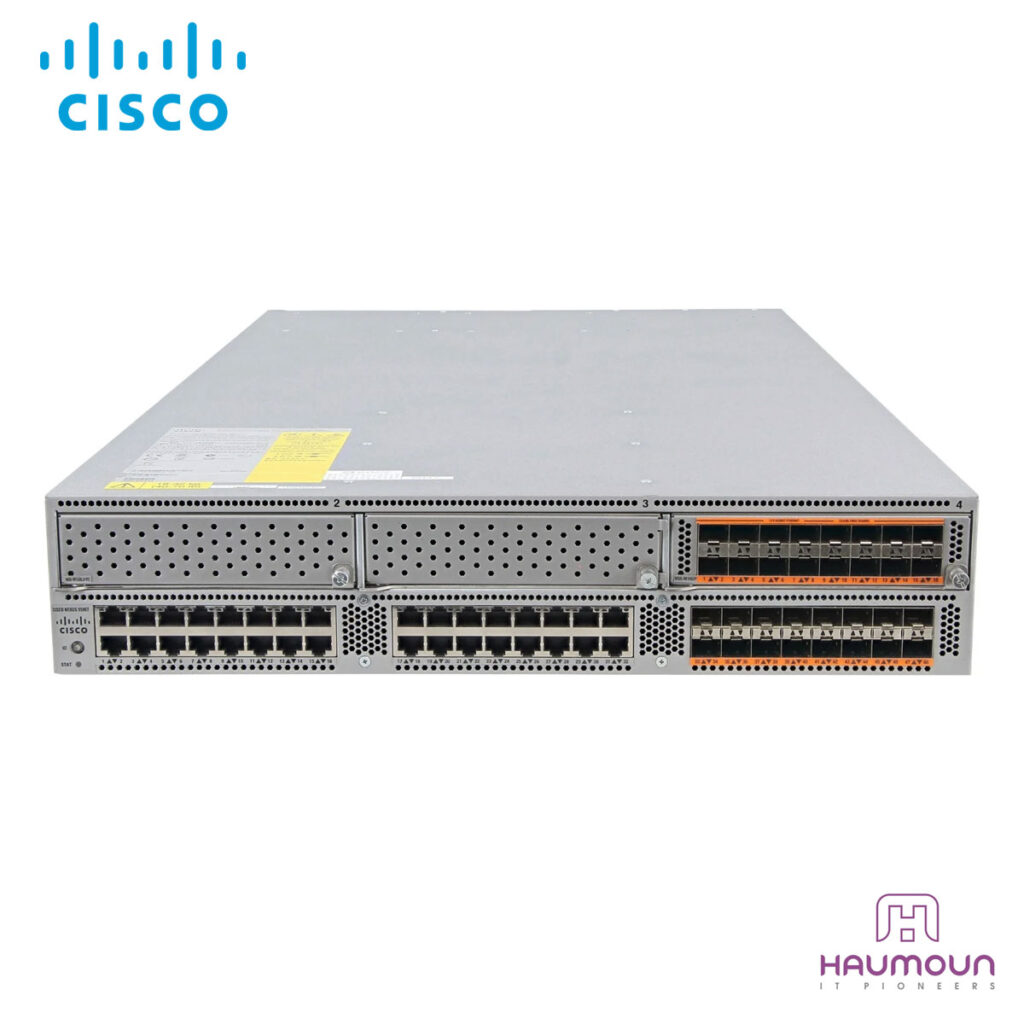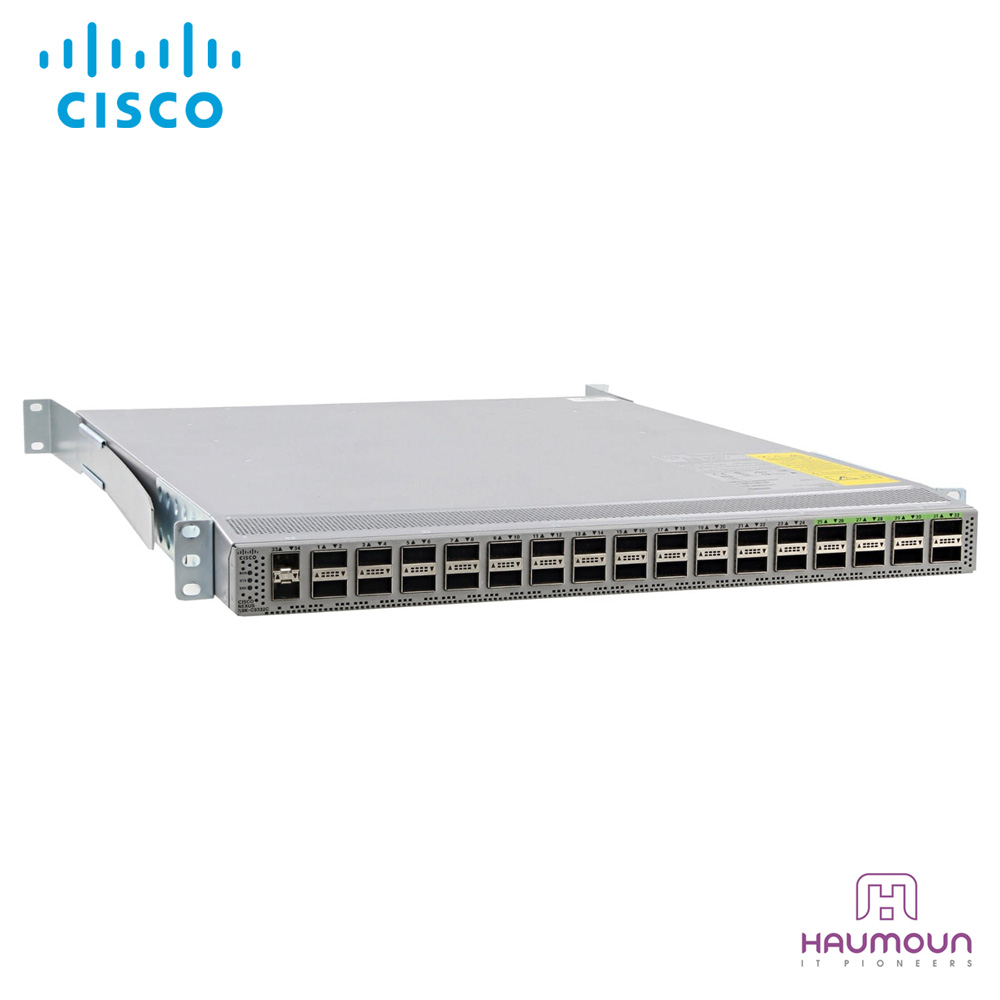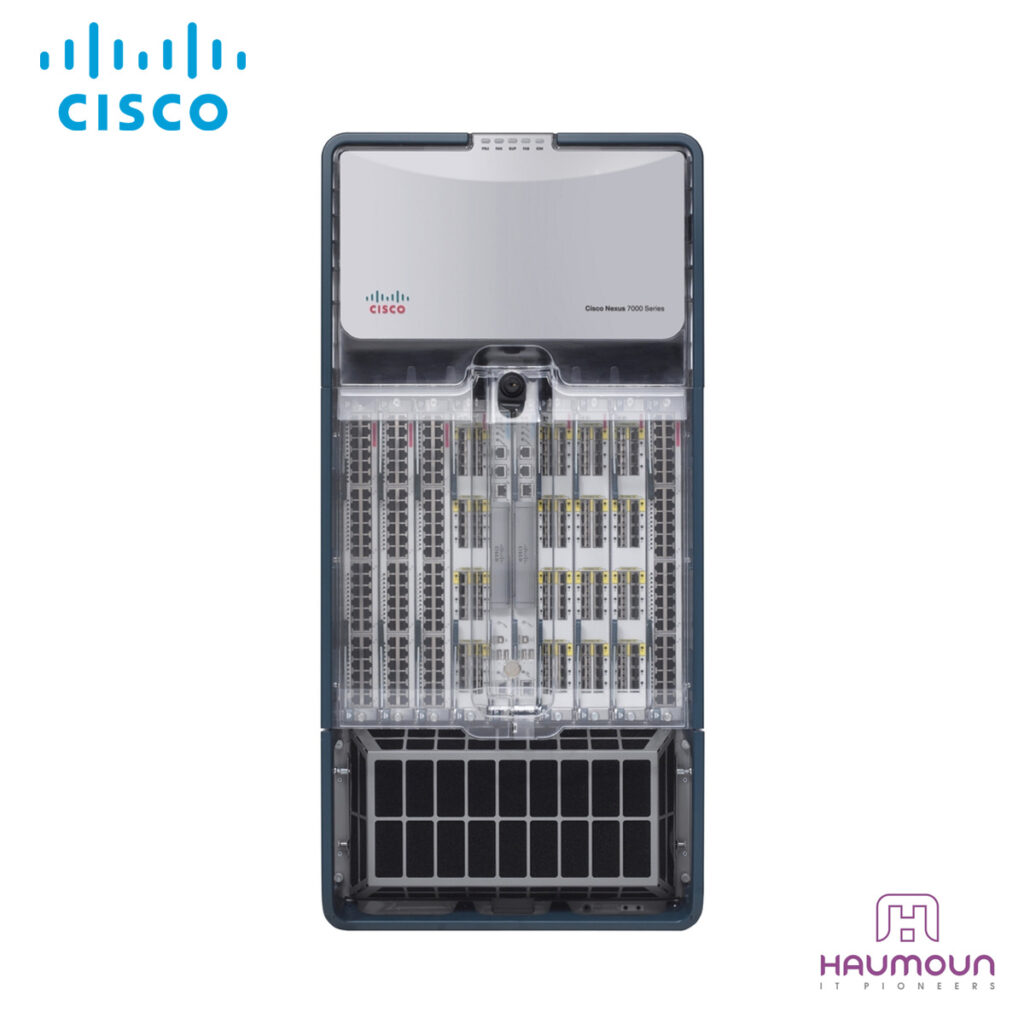سوئیچ نکسوس سیسکو مدل Nexus N5K-C56128P
سوئیچ نکسوس سیسکو مدل Nexus N5K-C56128P
- نوع محصول: سوئیچ
- منبع تغذیه: منبع تغذیه اضافی / منبع تغذیه AC
- لایههای پشتیبانیشده: لایه ۲ و لایه ۳
- فرم فاکتور: قابل نصب در رک (Rack-mount)
- مصرف برق: ۳۵۰ وات
- تعداد پورتهای اترنت: بیش از ۴۸ پورت
- تعداد پورتهای داونلینک: ۴۸ پورت
معرفی سوئیچ نکسوس سیسکو مدل Nexus N5K-C56128P
سوئیچهای سری Cisco Nexus 5000 عملکرد بالا، کارایی عملیاتی و انعطافپذیری در طراحی را با مجموعه کامل قابلیتهای Cisco NX-OS و مقیاسپذیری 10/40 گیگابیت اترنت ارائه میدهند. این سری از سوئیچها میتوانند سوئیچهای قدرتمندی در اختیار شما قرار دهند که با تراکم بالا در سطح Top-of-Rack (ToR)، قابلیتهای لایه 2 و لایه 3، پورتهای 10/40 گیگابیت اترنت و Unified Ports را در قالب فرمفاکتورهای فشرده یک، دو و چهار یونیتی (Rack Unit) عرضه میکنند.
سوئیچهای سیسکو سری 5000 جزو تجهیزات حرفهای و پرکاربرد در مراکز داده (Data Center) هستند که برای اتصال Top-of-Rack (ToR) طراحی شدهاند. این سوئیچها ترکیبی از عملکرد بالا، مقیاسپذیری، و انعطافپذیری در طراحی شبکه را در اختیار سازمانها قرار میدهند.
یکی از ویژگیهای مهم این سری، پشتیبانی از پورتهای 10 و 40 گیگابیت اترنت است که امکان انتقال سریع دادهها در محیطهای پرترافیک دیتاسنتر را فراهم میکند. همچنین به لطف فناوری Unified Ports، این سوئیچها قابلیت پشتیبانی از انواع مختلف پروتکلهای شبکه (Ethernet، FCoE و FC) را دارند و همین موضوع باعث میشود نیاز به تجهیزات جداگانه کاهش یابد.
از نظر طراحی سختافزاری، سوئیچهای Nexus 5000 در قالب فرمفاکتورهای 1RU، 2RU و 4RU عرضه میشوند که باعث میشود در رک فضای کمتری اشغال کنند و برای دیتاسنترهایی با تراکم بالا بسیار مناسب باشند.
در لایه نرمافزاری هم این سری به سیستمعامل Cisco NX-OS مجهز است که امکانات پیشرفتهای مثل موارد زیر را فرهم می کند:
- مدیریت و مانیتورینگ حرفهای
- پشتیبانی از قابلیتهای لایه 2 و لایه 3
- افزایش امنیت و قابلیت اطمینان
- سازگاری با معماریهای مدرن شبکه و Cloud
سوئیچ Cisco Nexus 56128P یک سوئیچ 2RU (دو واحد رک) است که از 48 پورت ثابت Ethernet SFP+ با سرعت 1 گیگابیت و 10 گیگابیت و 4 پورت QSFP+ با سرعت 40 گیگابیت پشتیبانی میکند. این پورتها علاوه بر Ethernet، از FCoE نیز پشتیبانی میکنند.
سوئیچ Cisco Nexus 56128P از سیستم عامل Cisco NX-OS استفاده میکند که از جمله پیشروترین نرمافزارهای شبکه در صنعت است و قابلیتها و ویژگیهایی را ارائه میدهد که در بسیاری از سازمانها و دیتاسنترها به کار گرفته شده است.
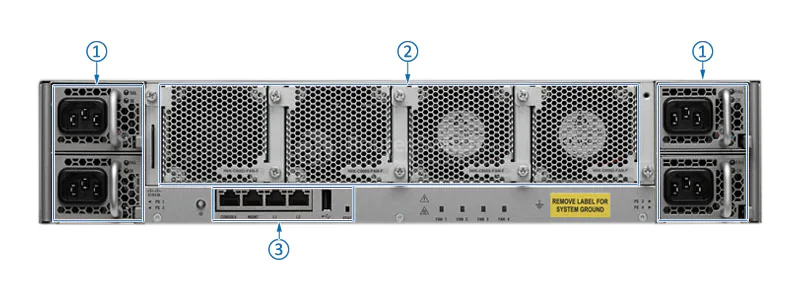
| شماره | ویژگی |
|---|---|
| ① | Hot-Swappable N+1 Redundant AC/DC Power Supplies |
| ② | Hot-Swappable N+1 Redundant Fan Trays (4 per switch) – Choice of reverse airflow |
| ③ | Management/Console/USB |
N5K-C56128P Specifications |
|
|---|---|
|
Form factor |
2-rack unit |
|
Expansion slots |
2 |
|
Number of ports |
1152 with FEX |
|
10 GE |
Up to 96 wire-rate ports |
|
40 GE |
Up to 8 QSFP ports |
|
Unified ports |
Up to 48 ports (Ethernet; FCoE; 2/4/8-gigabit FC) |
|
10 and 40 Gbps FCoE |
Yes |
|
Hardware VXLAN |
Yes |
|
NVGRE capable |
Yes |
|
Latency |
1 microsecond |
|
Performance |
● Layer 2 and 3 hardware forwarding at 2.56 Tbps; 1904 mpps (64-byte packets) ● Support for up to 256,000 combined entries of MAC addresses and Address Resolution Protocol (ARP) entries ● Low latency of approximately 1 microsecond using cut-through forwarding for predictable, consistent traffic latency regardless of packet size, traffic pattern, or features enabled on 10 and 40 Gigabit Ethernet interfaces ● 25-MB buffer per 12 x 10 Gigabit Ethernet SFP+ interfaces ● Line-rate traffic throughput on all ports in Layer 2 and 3 mode |
|
Interfaces |
● 48 fixed 1/10 Gigabit Ethernet SFP+ ports with 4 x 40 Gigabit Ethernet QSFP+ fixed ports and 2 expansion slots ● Expansion module: 24 SFP+ unified ports plus 2 x 40 Gigabit Ethernet QSFP+ ports ● Conversion of 40 Gigabit Ethernet ports to 10 Gigabit Ethernet interfaces through QSFP+ breakout cable ● Fabric extension through the Cisco Nexus 2200 and 2300 platforms |
|
Layer 2 Features |
● Layer 2 switch ports and VLAN trunks ● IEEE 802.1Q VLAN encapsulation ● Support for up to 4000 VLANs ● Support for up to 4000 access control list (ACL) entries ● Rapid Per-VLAN Spanning Tree Plus (PVRST+) (IEEE 802.1w compatible) ● Multiple Spanning Tree Protocol (MSTP) (IEEE 802.1s): 64 instances ● Spanning Tree PortFast ● Spanning Tree root guard ● Spanning Tree Bridge Assurance ● Cisco EtherChannel technology (up to 16 ports per EtherChannel) ● Cisco vPC technology ● vPC configuration synchronization ● vPC shutdown ● Link Aggregation Control Protocol (LACP): IEEE 802.3ad ● Advanced port-channel hashing based on Layer 2, 3, and 4 information ● Jumbo frames on all ports (up to 9216 bytes) ● Pause frames (IEEE 802.3x) ● Storm control (unicast, multicast, and broadcast) ● Private VLANs ● Private VLAN over trunks (isolated and promiscuous) ● Private VLANs over vPC and EtherChannels ● VLAN remapping ● FabricPath ● EvPC and vPC+ with FabricPath ● Adapter FEX ● Data Center VM-FEX ● Support for up to 24 fabric extenders (Layer 2) with each Cisco Nexus 5672UP, 5672UP-16G, and 56128P Switch ● RDMA over Converged Ethernet (RoCE) using Data Center Bridging (DCB) support (DCB Exchange [DCBX] no drop and priority flow control [PFC]) |
|
Layer 3 Features |
● Layer 3 interfaces: Routed ports, switch virtual interface (SVI), port channels, subinterfaces, and port-channel subinterfaces ● Support for up to 32,000 IPv4 and 8000 IPv6 host prefixes ● Support for up to 8000 multicast routes (IPv4) ● Support for up to 8000 IGMP snooping groups ● Support for 4000 Virtual Routing and Forwarding (VRF) entries ● Support for up to 4096 VLANs ● Equal-Cost Multipathing (ECMP) up to 64 ways ● 4000 flexible ACL entries ● Routing protocols: Static, Routing Information Protocol Version 2 (RIPv2), Enhanced Interior Gateway Routing Protocol (EIGRP), Open Shortest Path First Version 2 (OSPFv2), Border Gateway Protocol (BGP), and Intermediate System-to-Intermediate System (IS-IS) ● IPv6 routing protocols: Static, OPFv3, BGPv6, and EIGRPv6 ● IPv6 VRF-lite ● BFD support: OSPFv2, BGPv4, EIGRP, and VRF instances ● Policy-Based Routing (IPv4 and IPv6) ● Hot-Standby Router Protocol (HSRP) and Virtual Router Redundancy Protocol (VRRP) ● IP direct broadcast ● vPC+ routing protocol peering ● ACL: Routed ACL with Layer 3 and 4 options to match ingress and egress ACL ● Multicast: Protocol Independent Multicast Version 2 (PIMv2) sparse mode, Source-Specific Multicast (SSM), Bidir-PIM, Multicast Source Discovery Protocol (MSDP), IGMPv2 and v3, and Multicast VLAN Registration (MVR) ● VRF: VRF-lite (IP VPN); VRF-aware unicast; and BGP-, OSPF-, RIP-, and VRF-aware multicast ● Unicast Reverse-Path Forwarding (uRFP) with ACL; strict and loose modes ● Jumbo frame support (up to 9216 bytes) ● Support for up to 24 fabric extenders on each Cisco Nexus 5600 10-Gbps platform switch |
|
Quality of Service (QoS) |
● Layer 2 IEEE 802.1p (class of service [CoS]) ● 8 unicast queues and 8 multicast queues per port ● Per-port QoS configuration ● CoS trust ● Port-based CoS assignment ● Modular QoS CLI (MQC) compliance: IPv4 and IPv6 ● ACL-based QoS classification (Layers 2, 3, and 4) ● Flexible TCAM carving ● MAC and ARP hardware carving ● MQC CoS marking ● Per-port virtual output queuing ● CoS-based egress queuing ● Egress strict-priority queuing ● Egress port-based scheduling: Deficit Weighted Round-Robin (DWRR) ● Control-Plane Policing (CoPP): IPv4 and IPv6 |
|
Security |
● Ingress ACLs (standard and extended) on Ethernet and virtual Ethernet ports ● Standard and extended Layer 2 ACLs: MAC addresses, protocol type, etc. ● Standard and extended Layer 3 and 4 ACLs: IPv4 and IPv6, Internet Control Message Protocol (ICMP and ICMPv6), TCP, User Datagram Protocol (UDP), etc. ● Ingress policing ● VLAN-based ACLs (VACLs) ● Port-based ACLs (PACLs) ● Named ACLs ● Optimized ACL distribution ● ACLs on virtual terminals (vtys) ● ACL logging (IPv4 only) ● Dynamic Host Configuration Protocol (DHCP) snooping with Option 82 ● Dynamic ARP Inspection ● IP source guard ● DHCP relay (up to 32 destinations) ● Ethernet port security ● IPv6 RACL, PACL, and VACL ● iSCSI type-length-value (TLV) |
|
High-Availability Features |
● Cisco In-Service Software Upgrade (ISSU) for Layer 2 ● Hot-swappable field-replaceable power supplies and fan modules ● N+1 and N+N power redundancy ● N+1 fan module redundancy |
|
Management |
● Switch management using 10/100/1000-Mbps management or console ports ● CLI-based console to provide detailed out-of-band management ● In-band switch management ● Port-based locator and beacon LEDs ● Configuration synchronization ● Configuration rollback ● Secure Shell Version 2 (SSHv2) ● Telnet ● Authentication, authorization, and accounting (AAA) ● AAA with RBAC ● RADIUS ● TACACS+ ● Syslog (8 servers) ● Embedded packet analyzer ● SNMPv1, v2, and v3 (IPv4 and IPv6) ● Enhanced SNMP MIB support ● XML (NETCONF) support ● Remote monitoring (RMON) ● Advanced Encryption Standard (AES) for management traffic ● Unified username and passwords across CLI and SNMP ● Microsoft Challenge Handshake Authentication Protocol (MS-CHAP) ● Digital certificates for management between switch and RADIUS server ● Cisco Discovery Protocol Versions 1 and 2 ● RBAC ● SPAN on physical, PortChannel and VLAN ● ERSPAN ● Ingress and egress packet counters per interface ● Network Time Protocol (NTP) ● Cisco Generic Online Diagnostics (GOLD) ● Comprehensive bootup diagnostic tests ● Cisco Embedded Event Manager (EEM) ● Cisco Call Home ● Cisco Smart Call Home ● Default Interface ● Cisco Fabric Manager ● Cisco Prime DCNM ● CiscoWorks LAN Management Solution (LMS) |
|
Data Center Bridging |
● CEE- and IEEE-compliant PFC (per-priority Pause frame support: IEEE 802.1Qbb) ● PFC link distance support: 20 km ● CEE-compliant DCBX Protocol ● CEE- and IEEE-compliant enhanced transmission selection |
|
FCoE Features (Require Storage Services License) |
● T11 standards-compliant FCoE (Fibre Channel-BB-5) ● T11 FCoE Initialization Protocol (FIP) (Fibre Channel-BB-5) ● Any 10 or 40 Gigabit Ethernet port configurable as FCoE ● SAN administration separate from LAN administration ● Fibre Channel forwarding (FCF) ● Fibre Channel enhanced port types: VE, VF and VNP ● Direct attachment of FCoE targets ● Fabric Device Management Interface (FDMI) ● Fibre Channel ID (FCID) persistence ● Distributed device alias services ● In-order delivery ● Port tracking ● Cisco FCoE NPV technology ● N-port identifier virtualization (NPIV) ● Fabric services: Name server, registered state change notification (RSCN), login services, and name-server zoning ● Per-VSAN fabric services ● Cisco Fabric Services ● Distributed device alias services ● Host-to-switch and switch-to-switch Fibre Channel-SP authentication ● Fabric Shortest Path First (FSPF) ● Standard zoning ● Enhanced zoning ● Cisco Fabric Analyzer ● Cisco DCNM-SAN ● Storage Management Initiative Specification (SMI-S) ● Boot from SAN over vPC and Enhanced vPC (EvPC) ● FCP ● VSAN trunking ● Fabric Device Management Interface (FDMI) ● Fibre Channel ID (FCID) persistence ● Distributed device alias services ● In-order delivery ● Port tracking ● Cisco NPV technology ● Fabric binding for Fibre Channel ● Port security ● Fibre Channel traceroute ● Fibre Channel ping ● Fibre Channel debugging |
|
SNMP MIBs |
|
|
Generic MIBs |
● SNMPv2-SMI ● CISCO-SMI ● SNMPv2-TM ● SNMPv2-TC ● IANA-ADDRESS-FAMILY-NUMBERS-MIB ● IANAifType-MIB ● IANAiprouteprotocol-MIB ● HCNUM-TC ● CISCO-TC ● SNMPv2-MIB ● SNMP-COMMUNITY-MIB ● SNMP-FRAMEWORK-MIB ● SNMP-NOTIFICATION-MIB ● SNMP-TARGET-MIB ● SNMP-USER-BASED-SM-MIB ● SNMP-VIEW-BASED-ACM-MIB ● CISCO-SNMP-VACM-EXT-MIB |
|
Layer 3 MIBs |
● UDP-MIB ● TCP-MIB ● OSPF-MIB ● BGP4-MIB ● CISCO-HSRP-MIB |
|
Ethernet MIBs |
● CISCO-VLAN-MEMBERSHIP-MIB ● CISCO-Virtual-Interface-MIB ● CISCO-VTP-MIB |
|
Configuration MIBs |
● ENTITY-MIB ● IF-MIB ● CISCO-ENTITY-EXT-MIB ● CISCO-ENTITY-FRU-CONTROL-MIB ● CISCO-ENTITY-SENSOR-MIB ● CISCO-FLASH-MIB ● CISCO-SYSTEM-MIB ● CISCO-SYSTEM-EXT-MIB ● CISCO-IP-IF-MIB ● CISCO-IF-EXTENSION-MIB ● CISCO-SERVER-INTERFACE-MIB ● CISCO-NTP-MIB ● CISCO-IMAGE-MIB ● CISCO-IMAGE-CHECK-MIB ● CISCO-IMAGE-UPGRADE-MIB ● CISCO-CONFIG-COPY-MIB ● CISCO-ENTITY-VENDORTYPE-OID-MIB ● CISCO-BRIDGE-MIB |
|
Monitoring MIBs |
● DIFFSERV-DSCP-TC ● NOTIFICATION-LOG-MIB ● DIFFSERV-MIB ● CISCO-CALLHOME-MIB ● CISCO-SYSLOG-EXT-MIB ● CISCO-PROCESS-MIB ● RMON-MIB ● CISCO-RMON-CONFIG-MIB ● CISCO-HC-ALARM-MIB ● LLDP-MIB |
|
Security MIBs |
● CISCO-AAA-SERVER-MIB ● CISCO-AAA-SERVER-EXT-MIB ● CISCO-COMMON-ROLES-MIB ● CISCO-COMMON-MGMT-MIB ● CISCO-RADIUS-MIB ● CISCO-SECURE-SHELL-MIB ● TCP/IP MIBs ● INET-ADDRESS-MIB ● TCP-MIB ● CISCO-TCP-MIB ● UDP-MIB ● IP-MIB ● CISCO-IP-PROTOCOL-FILTER-MIB ● CISCO-DNS-CLIENT-MIB ● CISCO-PORTSECURITY-MIB |
|
Miscellaneous MIBs |
● START-MIB ● CISCO-LICENSE-MGR-MIB ● CISCO-FEATURE-CONTROL-MIB ● CISCO-CDP-MIB ● CISCO-RF-MIB ● CISCO-ETHERNET-FABRIC-EXTENDER-MIB ● CISCO-BRIDGE-MIB ● CISCO-FCOE-MIB ● CISCO-PORTCHANNEL-MIB ● CISCO-ZS-MIB |
|
Standards |
|
|
Industry Standards |
● IEEE 802.1D: Spanning Tree Protocol ● IEEE 802.1p: CoS prioritization ● IEEE 802.1Q: VLAN tagging ● IEEE 802.1Qaz: Enhanced transmission selection ● IEEE 802.1Qbb: Per-priority Pause ● IEEE 802.1s: Multiple VLAN instances of Spanning Tree Protocol ● IEEE 802.1w: Rapid reconfiguration of Spanning Tree Protocol ● IEEE 802.3: Ethernet ● IEEE 802.3ad: LACP with fast timers ● IEEE 802.3ae: 10 Gigabit Ethernet ● IEEE 802.3ba: 40 Gigabit Ethernet (Applies to 40G SR4, SR4-S, LR4, LR4-S, and CSR4 optics only) ● SFF 8431 SFP+ CX1 support ● RMON |
فرم ثبت سفارش


